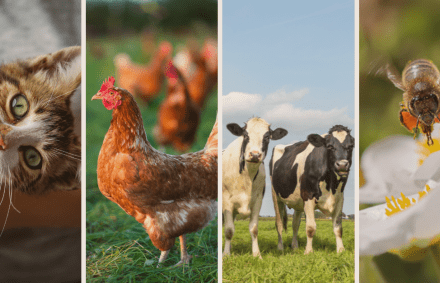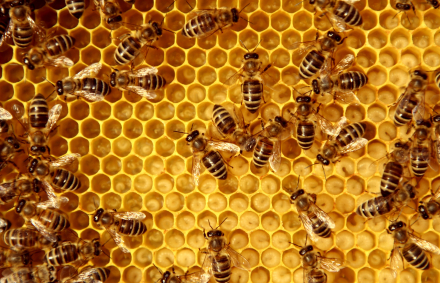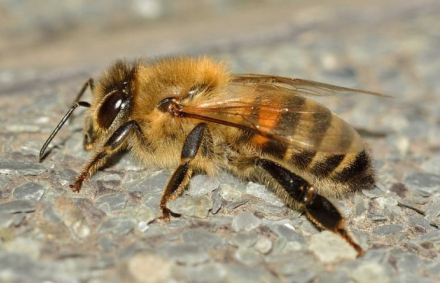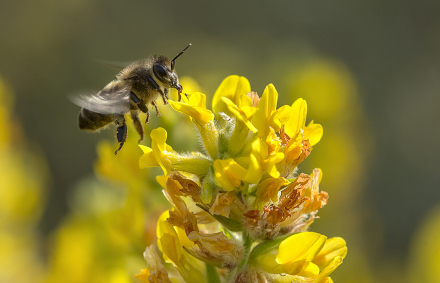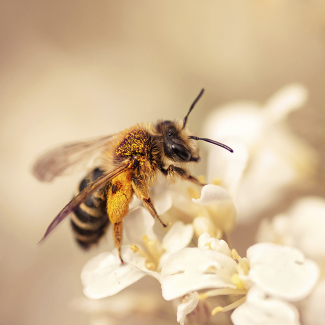
For half a century, beekeeping worldwide has been facing a major challenge due to the decline in Apis mellifera populations as a result of the arrival of the Varroa destructor mite. Since 1980, the search for tolerant bees has been one of the challenges facing many scientific groups and queen farms.
Living with varroa is necessary, but this must not lead to weakness in the hives due to the entry of opportunistic diseases nor to an increase in toxic residues in the hives due to the use of acaricides.
Obtaining varroa-tolerant bees is one strategy for achieving this goal, which is being pursued through different approaches.
Nature's way: some bee populations that coexist with the mite for many generations without any intervention develop tolerance, so that they maintain a balance between the parasite and the host.
This fact has been demonstrated in the Asian bee, Apis cerana, the original host of Varroa sp, as well as in the African A. m. scutellata. Both have a high degree of tolerance against the mite. This natural tolerance seems to be associated with hygienic behaviour (HYG) and the "grooming" that these bees have, slowing down the growth of the varroa population. These behaviours are also more apparent in Africanised bees from Central and South America.
It is also helped by the shorter brood operculation time, especially short in A. m. capensis from southern Africa, which reduces the potential for varroa to reproduce.
In general, it seems that natural tolerance, acquired over the years by different bee colonies, would appear to be the combination of a series of factors, including the reduction of the mite's reproductive capacity, the elimination of infested broods, and the elimination of phoretic mites through "delousing".
The artificial selection seeks the same, but with greater pressure.
It consists of selecting those colonies that survive untreated at given varroa levels and reproducing them. In Europe, such tests have been successfully conducted in several countries and have resulted in different varroa tolerant populations. The biggest problem is the heritability of this tolerance, which requires continuous monitoring to prevent its loss through genetic variability in the offspring.
Other strategies are those based on developing genetic selection for certain phenotypic traits of interest:
- Hygienic behaviour(HB): the ability of worker bees to detect and remove the brood which is infested by any disease or poorly developed. The first evidence that this behaviour was effective against varroa was observed in A. cerana. Hives with high levels of pupae elimination (≥ 80%) had a lower mite infestation.
- Varroa-specific hygiene behaviour (VSH, Varroa Sensitive Hygiene, initially called Suppressed Mite Reproduction, SMR): this consists of eliminating varroa-specific infested brood, leading to reduced mite reproduction rate. Hives with VSH behaviour also have HB behaviour, but not all HBs have VSH.
- Deoperculation and subsequent operculation of cells with varroa infested brood: this behaviour consists of deoperculating the cells with infested brood, and subsequently reoperculating them, without culling the brood. This behaviour has been observed in many colonies and has been associated with a reduction in the reproductive success of the mite, as the mother varroa flee from these cells when they are deoperculated, which hinders their laying cycle, and almost 80% of them only make one laying cycle.
- Grooming (GRO) is the physical act performed by bees to eliminate mites from their bodies using their mouthparts or feet. Adult bees can remove them from their own bodies or be helped by other bees. Grooming may cause the mites to die or be damaged or they may simply move to another part of the body, to a new host, or fall off. It has been observed that the colonies selected for this behaviour show higher tolerance to varroa.
- Others :study of pheromones, genetic markers, etc.
All these efforts have made significant progress in understanding the mechanisms involved in tolerance that can help in the breeding of colonies for commercial purposes.
Varroa control is a complex job and all tools are essential for improving the health of the bees. Collaboration between scientists, beekeepers and veterinary laboratories is essential to improvement in this area.
Grindrod I, Martin SJ. (2021). Parallel evolution of Varroa resistance in honey bees: a common mechanism across continents? Proc. R. Soc. B 288: 20211375. https://doi.org/10.1098/rspb.2021.1375
Le Conte, Y., Meixner, M. D., Brandt, A., Carreck, N. L., Costa, C., Mondet, F. & Büchler, R. (2020) Geographical distribution and selection of european honey bees resistant to Varroa destructor. Insects, 11(12):873. https://doi:10.3390/insects11120873
